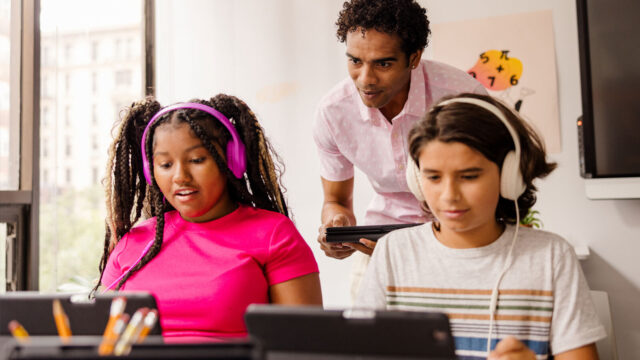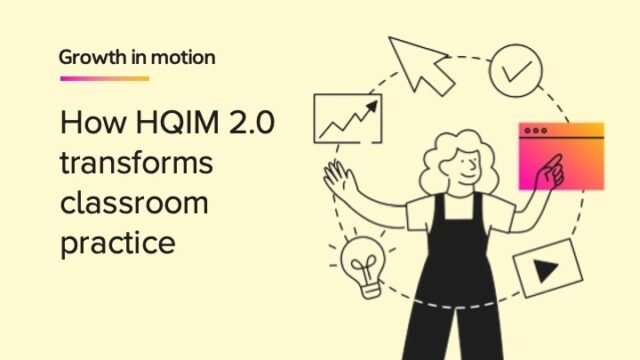
The term “game” is often used to describe any interactive activity, but for this article, we define what a game is by looking at some qualities that make up most of them:
- A game is structured (i.e., it has rules).
- A game has goals and challenges associated with those goals.
- A player interacts with the game by taking actions based on feedback received and by interacting with the game’s rules (i.e., goal attainment).
The feedback received during the game enables players to learn more about how they might achieve their objectives in future playthroughs of the activity, resulting in improved performance over time. Through trial and error, players become more skilled at managing their resources and understanding how best to leverage them within each challenge level or task. The central goal is to meet those objectives successfully before time runs out or resources are exhausted entirely.
How can online games in school be used to support learning?
Incorporating games into a school environment can help in general to support positive behavior. These kinds of Positive Behavioral Interventions and Supports (PBIS) games can be used to support learning in a variety of ways. They can help students review for exams, they can teach content knowledge, or they can help students learn nonacademic skills like self-awareness and responsible decision-making.
Look out especially for games with learning strategies that are broadly useful for all learners:
- Multiple representations: Students benefit from seeing the same idea (like a fraction or a part of speech) represented in different ways.
- Interdisciplinary connections: Games can help a school develop an integrated curriculum, which can help to solve broad, real-world problems.
- Student collaboration: Games can create engaging environments with low stakes for students to work with one another.
What kinds of PBIS games can be used to support learning?
Games have been long used to teach and practice skills in schools. In fact, games have been used for learning for centuries now, such as games being developed to hone military strategy or simulate real estate buying and selling. Today, educators use games to teach all kinds of subjects and skills—from math and science to history and literature. These games in school can take many forms, ranging from simple to complex. They can include:
- Card games
- Traditional board games
- Cooperative group projects, where students work together toward shared goals
- Competitive puzzles requiring strategic thinking
- Immersive role-play scenarios based on historical events
- Interactive exhibits at museums
- Role-playing video games played alone or against others online
Gamification in education, or the incorporation of gaming elements into a learning environment, can help students learn in many ways. It can help students explore and learn subject matter, and it can make the lesson more engaging if it has features like avatars or leaderboards. Many games can also help with skills like learning to lose or working as a team.
For more complex subject matter, games also offer an opportunity to bring a subject alive through play. For example, if you’re teaching your class about a historical movement or event, some games allow students to not only simulate parts of that moment in history but also explore relevant themes, build empathy, and encourage critical thinking. Let’s discuss different types of games and how they can be used to engage learners and support their work toward learning goals.
Content-specific games
Some games are designed explicitly to teach content or specific skills. These are the games that many people first associate with educational gaming. Many veteran teachers may recall The Oregon Trail, a video game that simulated the hardships of the real-life 19th-century Oregon Trail. Players made choices that mirrored dangers faced by those pioneers, offering players a a window into history. More contemporary video game examples include Europa Universalis, which models hundreds of historical events, and Walden, a Game, which immerses players in Henry David Thoreau’s 1854 book Walden.
Game-based learning in the classroom can also zero in on skills found on standardized tests. For example, many games are focused on helping students to practice math facts or the alphabet or spell words correctly.
Skill-building games
Other games have more general goals, such as fostering creativity or teaching teamwork and communication skills. These include team competitions and many outdoor athletic games. These games help players practice skills in a competitive or cooperative environment.
Games as rewards or settings
Nearly any game can be used in a classroom if it’s integrated in the right way. Games can be classrooom rewards for students who are incentivized by getting to play them. They can be earned at a class or school level, for example, by planning a game day if students read a certain number of books. Or, games can be individual rewards earned over time, which is one of the features of the personalized practice program Waggle.
In some cases, games can even be a simulated world in which the learning takes place. Minecraft has many lessons teachers can use that have students learning as avatars within the video game.
Games for Change is an organization devoted to gaming as a force for learning and advancement. They publish a game directory with a wide range of games that are designed to foster empathy, develop life skills, explore far-away places, investigate science topics, and engage with historical events, among other learning opportunities.
How can games be used to support PBIS learning goals?
Students are ideally taught about positive behaviors and offered opportunities to practice them. Students may come to the classroom needing special support with general conflict resolution, communication, or problem-solving skills and would benefit from opportunities to practice positive behaviors. Games can play an important role in teaching and reinforcing these fundamentals. As a tool for engaging and teaching, games can be used in a variety of ways to support your school’s PBIS goals.
Games can help students practice PBIS goals
Some games are designed to teach specific skills, such as cooperation or conflict resolution. Games provide a low-stakes environment in which students can practice PBIS strategies, receive feedback, and monitor progress toward their goals. Games can also provide opportunities for social development, team building, and leadership skills through cooperative play.
Games can help with classroom management
Games can also help with overall classroom management by providing an easy way for teachers and students to communicate behavioral expectations and provide feedback on how well those expectations were met. Further, games that encourage cooperative play can have the effect of strengthening bonds among students and fostering a sense of community.
Games motivate and engage learners
Motivation is one of the most important aspects of education. Learners need to feel motivated to learn. Games are fun, provide quick feedback, and can be intrinsically motivating, which can add engagement to the learning process.
Gaming in education is a powerful tool for motivating learners to meet their learning goals. However, choosing the right type of game isn’t always that easy. Do you want to encourage competition or cooperation? Do you want to reinforce academic concepts or nurture softer skills such as communication and problem-solving?
To make sure you’re using games effectively, here are a few general principles to keep in mind:
- Games can provide a clear goal. This aspect of gaming can give learners an immediate sense of purpose and direction. When students know where they’re going, they feel more invested in their learning and are able to see progress along the way.
- Games can give learners options for success. Many games don’t just tell learners what to do but rather give choices and help players feel like they were part of creating their own success or failure.
- Games can offer feedback on performance. Learners can adjust course quickly and strategically. Students learn to welcome feedback and use it as a tool for improvement rather than view it as criticism. Through playing games, students have a chance to learn from their mistakes and persist through failure.
- Games can provide a sense of accomplishment. Even students struggling to complete a game may succeed in parts of it or find social connection from it. Games can serve as an ideal tool for motivating students who are striving for success in other ways.
Games are more than just fun; they can support learning goals and foster a sense of community. When done right, friendly competition and cooperation are reinforced over the course of playing games with and against peers. Gamification in the classroom can also offer an opportunity to practice new skills in a supportive environment. These new skills will help students develop healthier relationships with others in and out of school.
***
This article was adapted from a blog post initially developed by the education technology company Classcraft, which was acquired by HMH in 2023. The views expressed in this article are those of the author and do not necessarily represent those of HMH.
Be the first to read the latest from Shaped.














